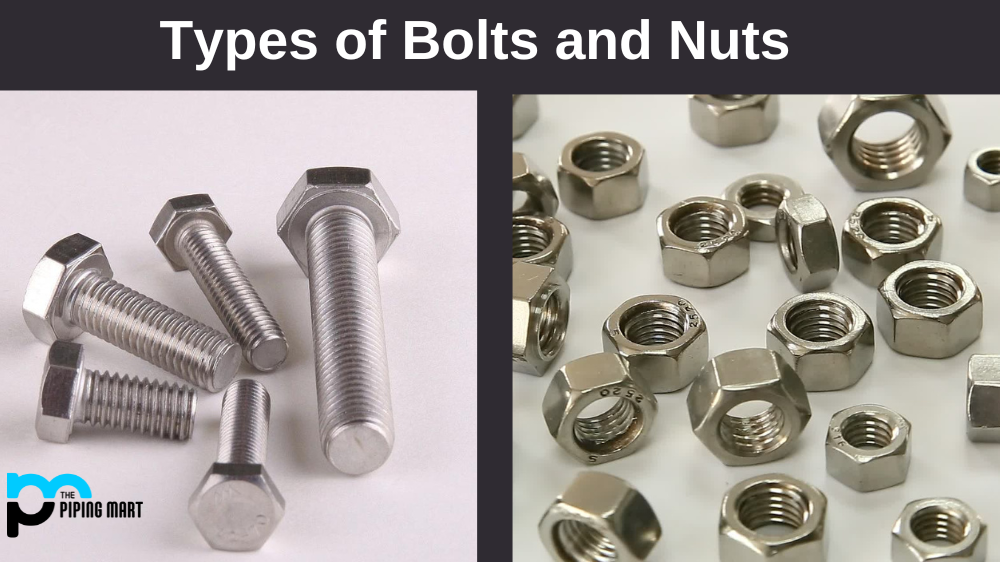In the world of building, car fixing, and do-it-yourself tasks, fasteners are often the silent supporters that hold everything together. These essential fasteners come in a variety of designs, sizes, and materials, each tailored for specific applications. Understanding the fundamentals of nuts and bolts is not just helpful for industry workers but is also extremely helpful for the everyday DIY enthusiast looking to approach maintenance jobs with self-assurance.
This guide is designed to demystify the confusing world of nuts and bolts. From identifying between different types nuts and bolts to investigating their multiple applications, you will learn how to pick the right hardware for your plans. Whether you're working on industrial projects, automotive repairs, or straightforward household repairs, we will cover the specifics you need to guarantee long-lasting and effective connections. Join us as we explore the core elements of this crucial manufacturing component.
Types and Uses of Nut Fasteners and Bolts
Nuts and bolt fasteners are crucial fasteners used across various fields and uses. Fundamentally, bolts can be classified into various categories, including hex bolts, carriage bolts, and lag bolts, each with specific uses. Hexagon bolts, for instance, are perfect for heavy-duty uses where durability is critical, while carriage fasteners are perfect for attaching wooden components due to their rounded top and smooth shaft. Lag bolts, on the other hand, are specifically engineered for anchoring large wooden frameworks or substantial weights, making them essential in building endeavors.
Grasping the role of different nut fasteners is just as important. Standard nuts are commonly utilized with bolts, but specialty nuts like lock nuts and flange nuts play crucial roles in stopping loosening under oscillation and offering a wider bearing surface. view it of nut fastener often depends on the use; for instance, locking nuts are essential in car maintenance where significant oscillation are present. Flange nuts may be preferred in constructions that require alignment and stability, highlighting the necessity of choosing the appropriate fastener.
In addition to conventional applications, nut fasteners and bolt fasteners have specific applications in distinct settings. Corrosion-resistant fasteners are valued for their corrosion resistance, making them suitable for external constructions and nautical applications. Additionally, unique fasteners such as anchoring bolts provide critical stability for base constructions, while nylon lock nuts offer increased safety by stopping unintended displacement. Choosing the right nuts and bolts based on material and application is paramount for ensuring the longevity and security of any undertaking.
Components and Coatings
As selecting nuts and bolts, the substance used holds a vital role in determining their performance and durability. Steel is the most frequent material, recognized for its strength and versatility. It is commonly used in a variety of contexts, making it a mainstay in many sectors. For settings prone to corrosion, stainless steel is an excellent choice due to its ability to rust and ability to tolerate harsh conditions. Other materials like bronze and titanium are also used, with brass providing good corrosion resistance and aesthetic appeal, while titanium offers a lightweight yet incredibly strong option for specialized purposes.

Finishings applied to nuts and bolts significantly impact their longevity and suitability for specific environments. Zinc coating is a popular choice for providing a sacrificial layer of protection against corrosion, making these fasteners suitable for outdoor use. Galvanized coating, which involves applying a thick layer of zinc, enhances strength and is preferred for heavy-duty uses exposed to moisture. Additionally, powder coating offers a customizable finish that not only enhances aesthetics but also boosts resistance to wear and chemicals, suitable for decorative or specialized projects.
Understanding the differences in materials and coatings can help users make informed decisions tailored to their specific needs. For instance, when dealing with outdoor installations, opting for corrosion-resistant coatings on metal fasteners is crucial for ensuring long-term performance. Acknowledging the environmental factors at play and the specific requirements of a project can guide the selection process, ensuring that the chosen nuts and bolts will provide reliable service in their intended applications.
Guide to Buying and Comparisons
As for selecting the appropriate nuts and bolts for your work, understanding the materials and details is vital. Various applications require different levels of strength, resistance to corrosion, and durability. For example, stainless steel fasteners are ideal for outdoor applications due to their ability to rust. Conversely, if you are using wood, choosing wood screws or lag bolts suitable for soft or hardwoods will ensure a secure fit. Always consider environmental factors and mechanical requirements before making a purchase.
Another, important aspect to consider is the thread type, which includes coarse, smooth, and metric threads. Coarse threads are often used in applications that need quicker assembly, while fine threads offer greater grip and tensioning in metal-to-metal applications. Understanding the variances between these thread types can help you pick fasteners that will most suit your specific needs, thereby boosting the performance and longevity of your projects.
Finally, assessing the quality of nuts and bolts is important before making a purchase. Look for fasteners that conform to industry standards and verify their grades. For instance, a bolt with a higher grade number generally indicates better strength and reliability. Utilize comparison guides to weigh the strengths and weaknesses of multiple fasteners. By investing navigate to this website in research and comparing options, you can ensure that you select the most appropriate nuts and bolts, enhancing both safety and functionality for your tasks.
